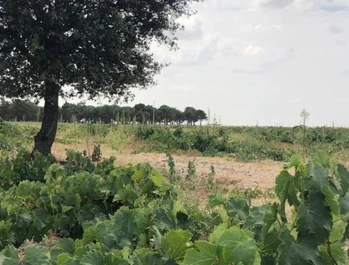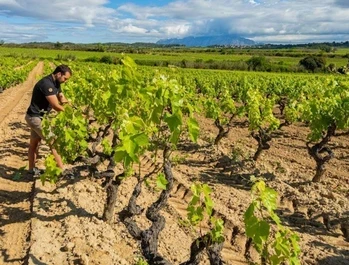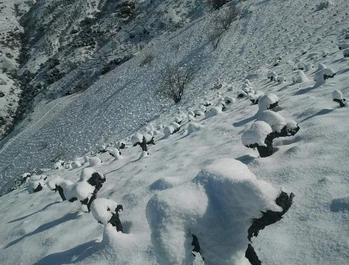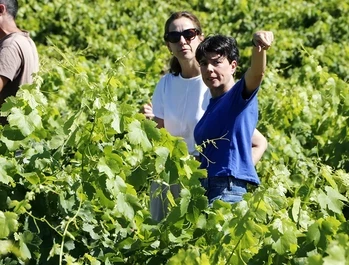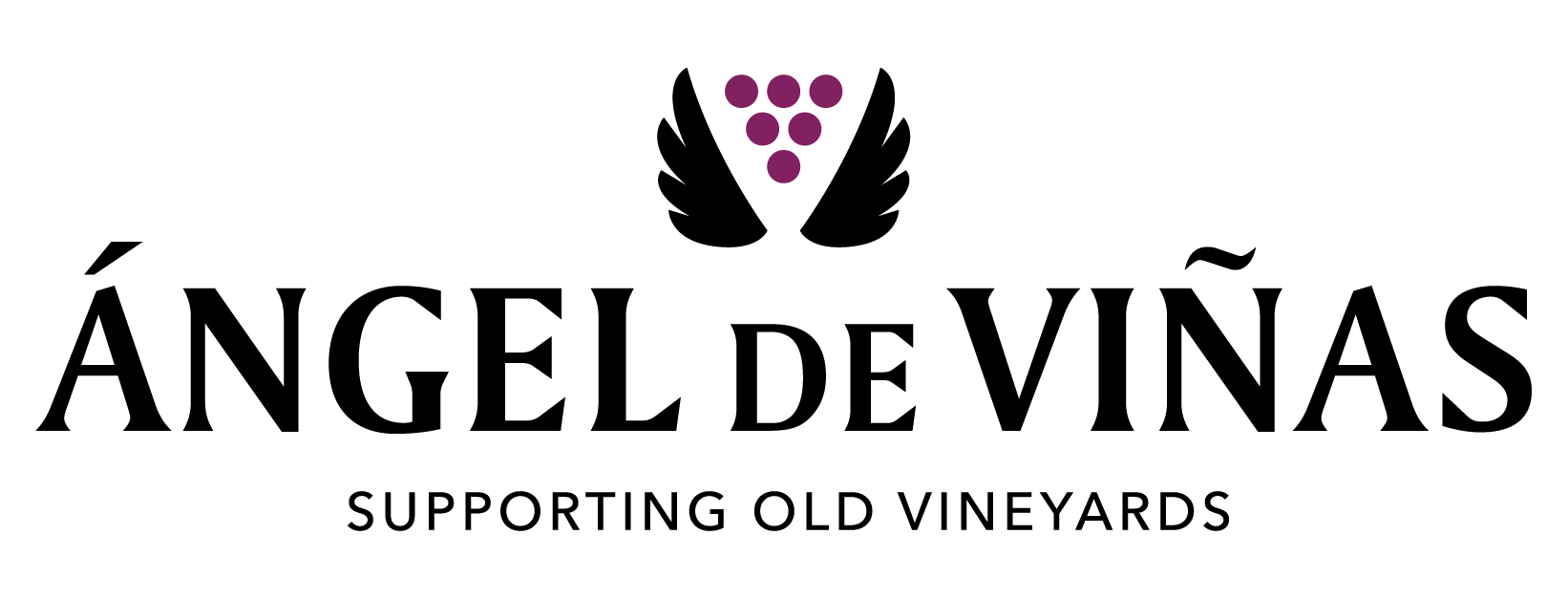
Since 2021, we have supported the recovery of old and unique vineyards at risk of disappearing. Each century-old vine we save is a story that remains alive: the story of those who work the land with respect, the story of a landscape that endures, and the story of a wine that preserves its memory.
Through Ángel de Viñas, we work to protect biodiversity, native varieties and the cultural value of these unique places, collaborating with growers, researchers and local communities. The project is born from a clear conviction: sustainability begins at the roots — in the care of the soil, the people, and the history that connects them.
Our commitment is to promote a mindful viticulture that blends tradition and innovation, honours the past, safeguards the future, and reminds us that caring for the land is also caring for our story.
Ángel de Viñas is an initiative by González Byass, created in 2021 together with the González Byass Foundation and supported by the Spanish Federation of Enology, aimed at recovering and preserving old and unique vineyards at risk of disappearing across different regions of Spain.
These vineyards — some more than a century old — represent an irreplaceable natural and cultural heritage: guardians of the landscape, of native grape varieties, and of the winemaking memory of the country.
PROJECT OBJETIVES:
- Rescue and preserve old vineyards
- Prevent the loss of biodiversity
- Protect traditional vines and associated ecosystems
- Ensure the continuity of cultivation
- Support awareness and outreach
Ángel de Viñas is an initiative by González Byass, created in 2021 together with the González Byass Foundation and supported by the Spanish Federation of Enology, aimed at recovering and preserving old and unique vineyards at risk of disappearing across different regions of Spain.
These vineyards — some more than a century old — represent an irreplaceable natural and cultural heritage: guardians of the landscape, of native grape varieties, and of the winemaking memory of the country.
PROJECT OBJETIVES:
- Rescue and preserve old vineyards
- Prevent the loss of biodiversity
- Protect traditional vines and associated ecosystems
- Ensure the continuity of cultivation
- Support awareness and outreach
Spain holds one of the greatest wine-growing treasures in the world, with century-old vineyards and native varieties that reflect centuries of history, culture and climatic diversity.
However, many of these vineyards are at risk of disappearing due to rural abandonment, climate change or the lack of generational succession.
Ángel de Viñas was created as a response to this need: to preserve viticultural biodiversity, to keep traditional farming practices alive, and to strengthen the bond between people and the land.
Each vineyard rescued is a time capsule — a lesson in natural sustainability, born from patience and respect for the environment.
To preserve is to keep alive the essence of wine and of those who make it possible.
Spain holds one of the greatest wine-growing treasures in the world, with century-old vineyards and native varieties that reflect centuries of history, culture and climatic diversity.
However, many of these vineyards are at risk of disappearing due to rural abandonment, climate change or the lack of generational succession.
Ángel de Viñas was created as a response to this need: to preserve viticultural biodiversity, to keep traditional farming practices alive, and to strengthen the bond between people and the land.
Each vineyard rescued is a time capsule — a lesson in natural sustainability, born from patience and respect for the environment.
To preserve is to keep alive the essence of wine and of those who make it possible.
This support is defined according to the specific needs of each vineyard.
It may consist of technical assistance, direct collaboration in maintenance and recovery work, support in the commercial strategy, or other actions that are always agreed jointly between the grower and the González Byass project team.
This support is defined according to the specific needs of each vineyard.
It may consist of technical assistance, direct collaboration in maintenance and recovery work, support in the commercial strategy, or other actions that are always agreed jointly between the grower and the González Byass project team.
Each point on the map represents an old vineyard that the Ángel de Viñas project has helped to preserve.
From north to south, from the mainland to the islands, we support the recovery of unique vineyards, indigenous varieties and agricultural traditions that are part of the soul of Spanish wine. Behind each one there are people, landscapes and knowledge that refuse to be forgotten.
This map is also a testament to our commitment: caring for the land, protecting its history and securing its future.
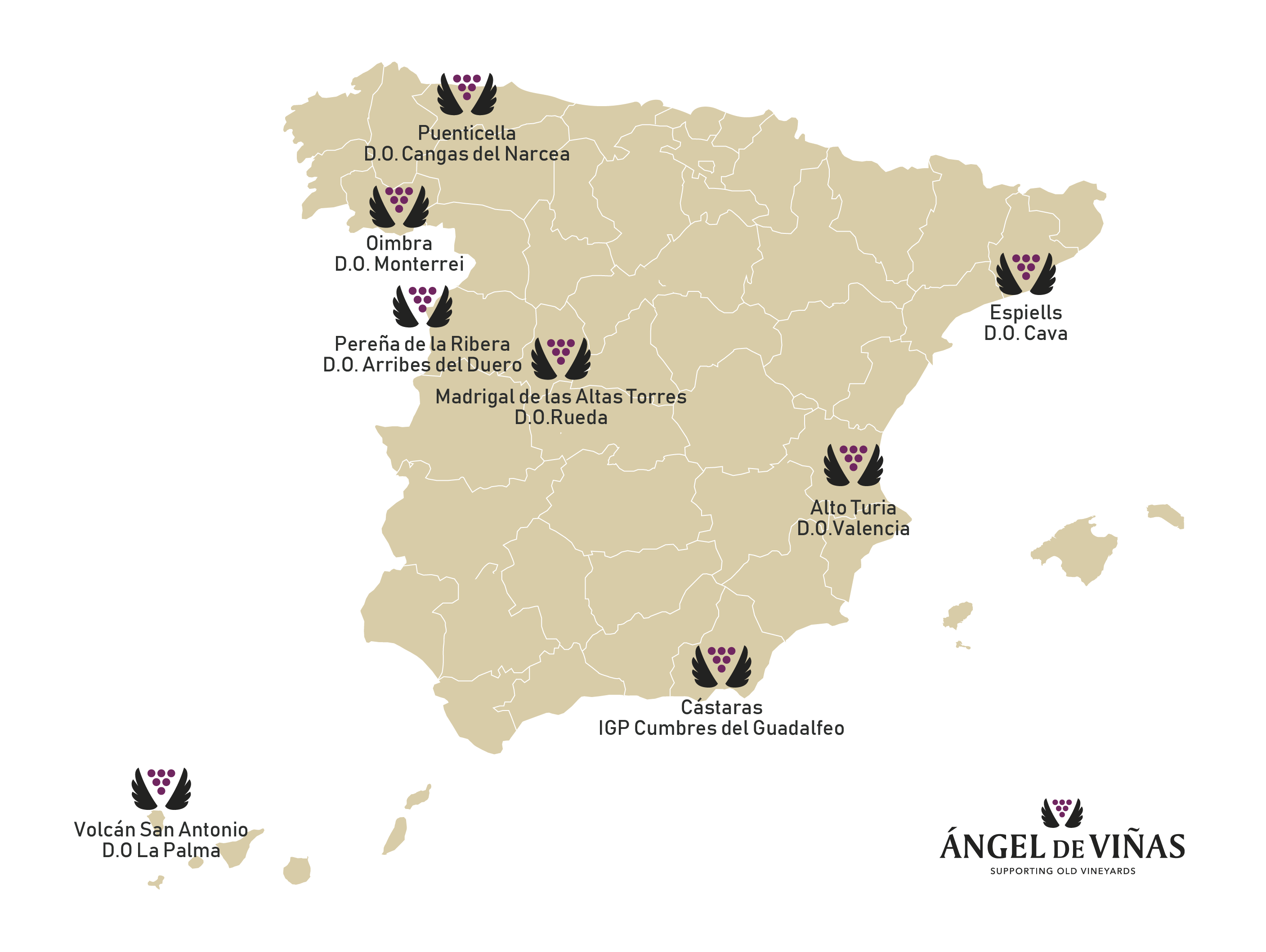
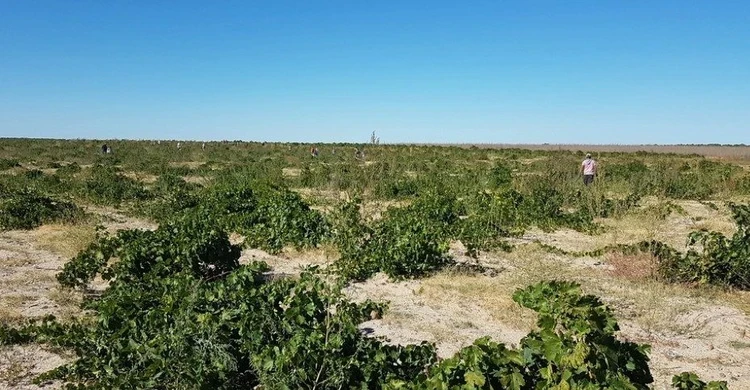
Year of incorporation: 2022
Year of vine plantation: 1947
Varieties: Verdejo
Surface area: 12 hectares
Location: Madrigal de las Altas Torres (Ávila), Castilla y León
Description:
In the historic municipality of Madrigal de las Altas Torres lies one of the most singular old vineyards in the D.O. Rueda — a viticultural heritage linked for centuries to the Verdejo variety. With more than 12 hectares planted in traditional bush vines, this vineyard has withstood the passage of time thanks to the work of generations who have kept the cultivation alive in the heart of the Castilian plateau.
Its recovery through Ángel de Viñas ensures the protection of a unique wine-growing landscape, where the extreme continental climate and the deep memory of the land translate into wines of sober character, longevity and aromatic depth. This vineyard marks the beginning of the project, with the vocation of preserving the true roots of the most authentic Rueda.
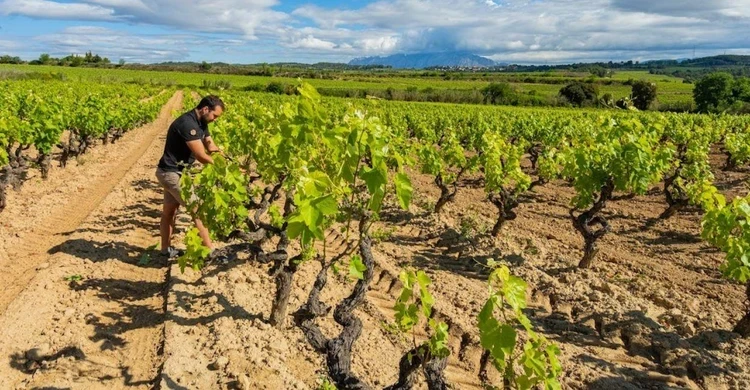
Year of incorporation: 2022
Year the vines were planted: 1974
Varieties: Xarel·lo and Macabeo
Surface area: 1.6 ha in total (1.2 ha of Xarel·lo + 0.4 ha of Macabeo)
Description:
In the heart of Espiells, one of the most characterful winegrowing areas of Penedès, two unique vineyards of Xarel·lo and Macabeo embody the deep-rooted connection of a family that has worked these lands for generations. With vines up to 50 years old and the historic soils surrounding Sant Sadurní, this vineyard preserves the Mediterranean essence that defines the great base wines for Cava.
Its incorporation into Ángel de Viñas ensures the continuity of a family-led viticulture that has maintained traditional bush-trained vines and a profound respect for the landscape. Espiells thus becomes the project’s first Catalan witness: memory, craftsmanship and territory shaping the future of old vineyards.
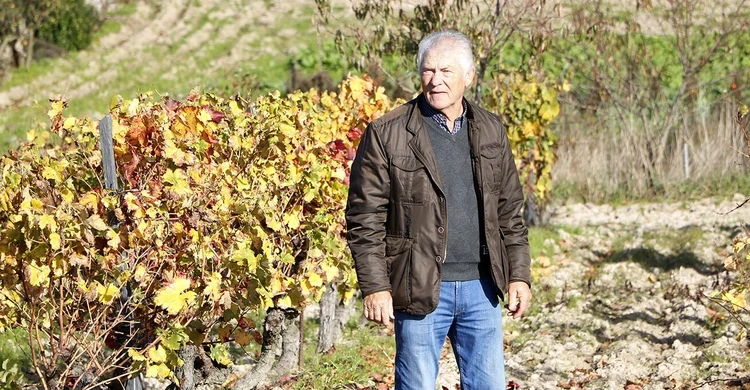
Year of incorporation: 2023
Year of planting: 1935
Varieties: Doña Branca (main) and Mouratón (minor)
Surface area: 0.6 ha
Description:
In the small village of As Chas, in the southernmost part of the Monterrei DO, a small viticultural gem planted in 1935 continues to survive, now tended by the fourth generation of the same family. Its 0.6 hectares of old vines — led by Doña Branca with a small proportion of Mouratón — represent a heritage at risk due to the gradual abandonment of traditional viticulture in the area.
Its incorporation into Ángel de Viñas in 2023 ensures the continuity of this legacy, preserving the valley’s Atlantic identity and the inherited knowledge of those who have worked these vines for almost a century. A small vineyard in size, yet immense in memory and cultural value for Monterrei.
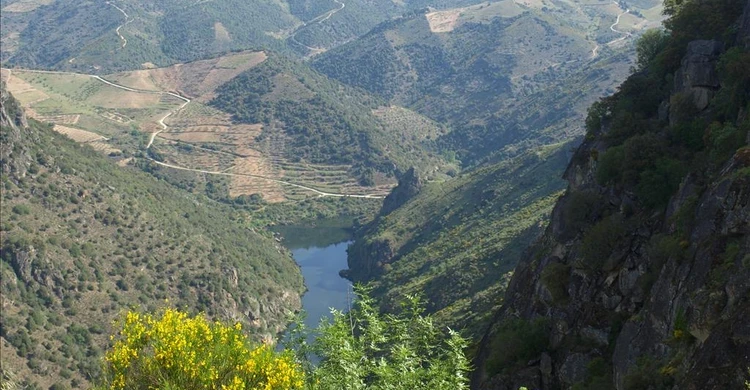
Year of inclusion: 2023
Year the vines were planted: 1936
Varieties: Juan García (main) and Tinto Jeromo (minor)
Surface area: 1.9 ha
Soil: Schist and quartz soils
Description:
In the Arribes del Duero Natural Park — where terraces of schist and quartz shape one of the oldest landscapes on the peninsula — a historic vineyard planted in 1936 still survives, now tended by the fourth generation of the same family. Its 1.9 hectares, dominated by the Juan García variety and complemented by the minority Tinto Jeromo, express the mineral and distinctive character of this borderland D.O.
The vineyard’s incorporation into the Ángel de Viñas project in 2023 ensures the continuity of a viticultural heritage threatened by abandonment. An extreme landscape, a viticulture of resilience, and a family memory that is now safeguarded so that Arribes continues to have a voice in the future.
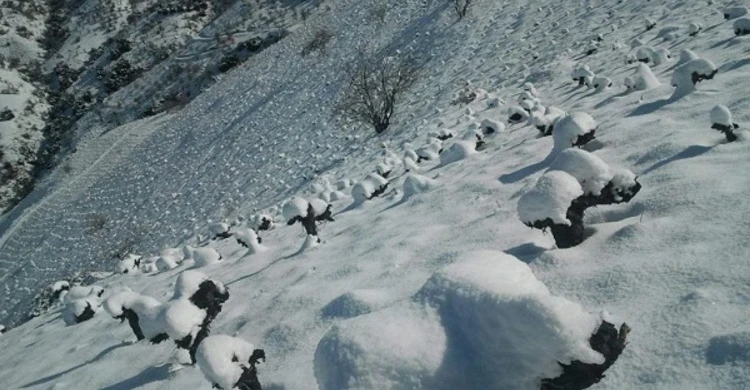
Year of incorporation: 2023
Year of plantation: 1920
Varieties: Jaén Blanco, Jaén Negro and Vijiriego (along with other traditional minor varieties)
Altitude: ~1,400 m
Soil: Slate/schist on steep slopes
Description:
On the rugged slopes of Cástaras, at 1,400 metres above sea level, lies one of the most extreme vineyards in the Alpujarra of Granada. This century-old vineyard, predominantly planted with Jaén Blanco, Jaén Negro and Vijiriego, preserves a mosaic of old bush-trained vines rooted in slate soils that make mechanisation impossible. The harshness of the terrain and the progressive abandonment of traditional viticulture had placed this unique heritage at risk—now safeguarded thanks to its incorporation into Ángel de Viñas in 2023.
The project ensures the continuity of a heroic, mountain viticulture deeply connected to the landscape, preserving the techniques, varieties and agricultural memory of the Alpujarra.
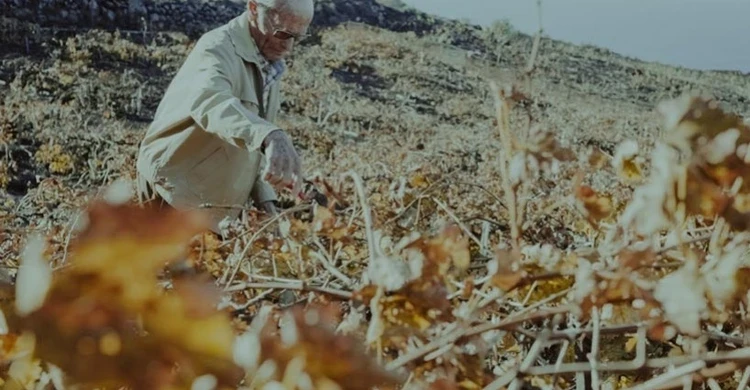
Year of incorporation: 2023
Year the vines were planted: 1920
Varieties: Malvasía and Listán Blanco
Altitude: 860 m
Soil: Volcanic (ash and lapilli from the San Antonio Volcano)
Description:
On the slopes of the San Antonio Volcano, where volcanic ash shapes the landscape and life unfolds between wind and lava, lies a historic vineyard planted in the early 20th century. Its Malvasía and Listán Blanco vines sink their roots into ash and lapilli soils that act as a natural sponge, retaining moisture and giving the wines a unique identity. The incorporation of this vineyard into the Ángel de Viñas project in 2023 ensures the protection of a fragile viticultural heritage, threatened by erosion, climate pressure, and abandonment. Today, this extreme landscape remains alive thanks to the hands of the winemaker from La Palma and the shared commitment to preserving a legacy that can only exist here, beside the volcano.
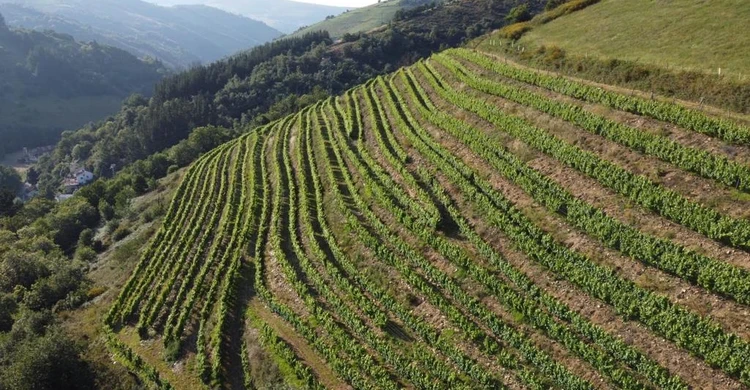
Year of incorporation: 2025
Varieties: Albarín Blanco, Verdejo Negro and Carrasquín
Description:
In the steep valleys of Cangas del Narcea, where viticulture has clung to the mountainsides for centuries, lies this old vineyard that forms part of Asturias’ small yet heroic winemaking heritage. Its pronounced slopes, Atlantic climate and entirely manual work have shaped a unique viticultural identity, marked by local varieties and traditional cultivation methods. With its incorporation into Ángel de Viñas in 2025, this endangered agricultural landscape gains continuity and protection, preserving the memory of Asturian vineyards and the dedication of the families who have kept them alive in the face of rural abandonment.
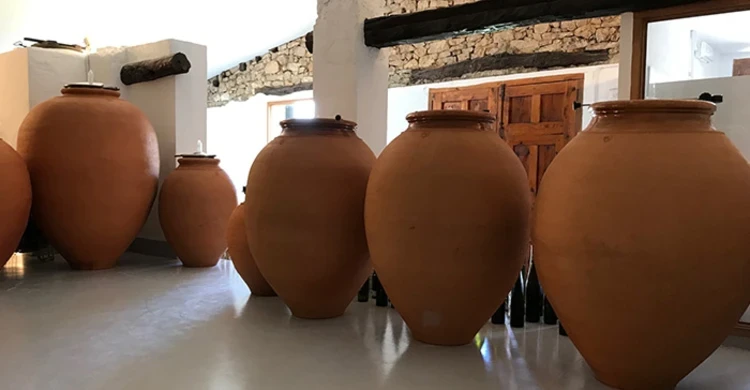
Year of incorporation: 2025
Year of vine planting: 1940
Varieties: Merseguera (main) and Bobal (minor)
Altitude: ~923 m
Description:
In the Serranía del Alto Turia, at more than 900 metres above sea level, some of the most distinctive mountain vineyards of the Mediterranean are still preserved. Dominated by the Merseguera variety —the emblematic white grape of the area— and accompanied by old Bobal vines, these plots planted between the 1960s and 1980s represent a heritage that once stood on the brink of abandonment.
Their incorporation into the Ángel de Viñas project in 2025 ensures the recovery of this extreme landscape, where altitude, a continental climate and low-intervention viticulture make it possible to craft wines with freshness, identity and memory. An isolated territory, an almost forgotten variety, and a future that is taking root once again.

Year of incorporation: 2022
Year of vine plantation: 1947
Varieties: Verdejo
Surface area: 12 hectares
Location: Madrigal de las Altas Torres (Ávila), Castilla y León
Description:
In the historic municipality of Madrigal de las Altas Torres lies one of the most singular old vineyards in the D.O. Rueda — a viticultural heritage linked for centuries to the Verdejo variety. With more than 12 hectares planted in traditional bush vines, this vineyard has withstood the passage of time thanks to the work of generations who have kept the cultivation alive in the heart of the Castilian plateau.
Its recovery through Ángel de Viñas ensures the protection of a unique wine-growing landscape, where the extreme continental climate and the deep memory of the land translate into wines of sober character, longevity and aromatic depth. This vineyard marks the beginning of the project, with the vocation of preserving the true roots of the most authentic Rueda.

Year of incorporation: 2022
Year the vines were planted: 1974
Varieties: Xarel·lo and Macabeo
Surface area: 1.6 ha in total (1.2 ha of Xarel·lo + 0.4 ha of Macabeo)
Description:
In the heart of Espiells, one of the most characterful winegrowing areas of Penedès, two unique vineyards of Xarel·lo and Macabeo embody the deep-rooted connection of a family that has worked these lands for generations. With vines up to 50 years old and the historic soils surrounding Sant Sadurní, this vineyard preserves the Mediterranean essence that defines the great base wines for Cava.
Its incorporation into Ángel de Viñas ensures the continuity of a family-led viticulture that has maintained traditional bush-trained vines and a profound respect for the landscape. Espiells thus becomes the project’s first Catalan witness: memory, craftsmanship and territory shaping the future of old vineyards.

Year of incorporation: 2023
Year of planting: 1935
Varieties: Doña Branca (main) and Mouratón (minor)
Surface area: 0.6 ha
Description:
In the small village of As Chas, in the southernmost part of the Monterrei DO, a small viticultural gem planted in 1935 continues to survive, now tended by the fourth generation of the same family. Its 0.6 hectares of old vines — led by Doña Branca with a small proportion of Mouratón — represent a heritage at risk due to the gradual abandonment of traditional viticulture in the area.
Its incorporation into Ángel de Viñas in 2023 ensures the continuity of this legacy, preserving the valley’s Atlantic identity and the inherited knowledge of those who have worked these vines for almost a century. A small vineyard in size, yet immense in memory and cultural value for Monterrei.

Year of inclusion: 2023
Year the vines were planted: 1936
Varieties: Juan García (main) and Tinto Jeromo (minor)
Surface area: 1.9 ha
Soil: Schist and quartz soils
Description:
In the Arribes del Duero Natural Park — where terraces of schist and quartz shape one of the oldest landscapes on the peninsula — a historic vineyard planted in 1936 still survives, now tended by the fourth generation of the same family. Its 1.9 hectares, dominated by the Juan García variety and complemented by the minority Tinto Jeromo, express the mineral and distinctive character of this borderland D.O.
The vineyard’s incorporation into the Ángel de Viñas project in 2023 ensures the continuity of a viticultural heritage threatened by abandonment. An extreme landscape, a viticulture of resilience, and a family memory that is now safeguarded so that Arribes continues to have a voice in the future.

Year of incorporation: 2023
Year of plantation: 1920
Varieties: Jaén Blanco, Jaén Negro and Vijiriego (along with other traditional minor varieties)
Altitude: ~1,400 m
Soil: Slate/schist on steep slopes
Description:
On the rugged slopes of Cástaras, at 1,400 metres above sea level, lies one of the most extreme vineyards in the Alpujarra of Granada. This century-old vineyard, predominantly planted with Jaén Blanco, Jaén Negro and Vijiriego, preserves a mosaic of old bush-trained vines rooted in slate soils that make mechanisation impossible. The harshness of the terrain and the progressive abandonment of traditional viticulture had placed this unique heritage at risk—now safeguarded thanks to its incorporation into Ángel de Viñas in 2023.
The project ensures the continuity of a heroic, mountain viticulture deeply connected to the landscape, preserving the techniques, varieties and agricultural memory of the Alpujarra.

Year of incorporation: 2023
Year the vines were planted: 1920
Varieties: Malvasía and Listán Blanco
Altitude: 860 m
Soil: Volcanic (ash and lapilli from the San Antonio Volcano)
Description:
On the slopes of the San Antonio Volcano, where volcanic ash shapes the landscape and life unfolds between wind and lava, lies a historic vineyard planted in the early 20th century. Its Malvasía and Listán Blanco vines sink their roots into ash and lapilli soils that act as a natural sponge, retaining moisture and giving the wines a unique identity. The incorporation of this vineyard into the Ángel de Viñas project in 2023 ensures the protection of a fragile viticultural heritage, threatened by erosion, climate pressure, and abandonment. Today, this extreme landscape remains alive thanks to the hands of the winemaker from La Palma and the shared commitment to preserving a legacy that can only exist here, beside the volcano.

Year of incorporation: 2025
Varieties: Albarín Blanco, Verdejo Negro and Carrasquín
Description:
In the steep valleys of Cangas del Narcea, where viticulture has clung to the mountainsides for centuries, lies this old vineyard that forms part of Asturias’ small yet heroic winemaking heritage. Its pronounced slopes, Atlantic climate and entirely manual work have shaped a unique viticultural identity, marked by local varieties and traditional cultivation methods. With its incorporation into Ángel de Viñas in 2025, this endangered agricultural landscape gains continuity and protection, preserving the memory of Asturian vineyards and the dedication of the families who have kept them alive in the face of rural abandonment.

Year of incorporation: 2025
Year of vine planting: 1940
Varieties: Merseguera (main) and Bobal (minor)
Altitude: ~923 m
Description:
In the Serranía del Alto Turia, at more than 900 metres above sea level, some of the most distinctive mountain vineyards of the Mediterranean are still preserved. Dominated by the Merseguera variety —the emblematic white grape of the area— and accompanied by old Bobal vines, these plots planted between the 1960s and 1980s represent a heritage that once stood on the brink of abandonment.
Their incorporation into the Ángel de Viñas project in 2025 ensures the recovery of this extreme landscape, where altitude, a continental climate and low-intervention viticulture make it possible to craft wines with freshness, identity and memory. An isolated territory, an almost forgotten variety, and a future that is taking root once again.
Every step matters when it comes to protecting the land and its memory. Through Ángel de Viñas, we turn our commitment to sustainability into concrete actions: rescuing old vineyards, preserving native varieties, and supporting the people who care for them. These achievements reflect our ongoing effort to keep Spain’s viticultural heritage alive and ensure its future.
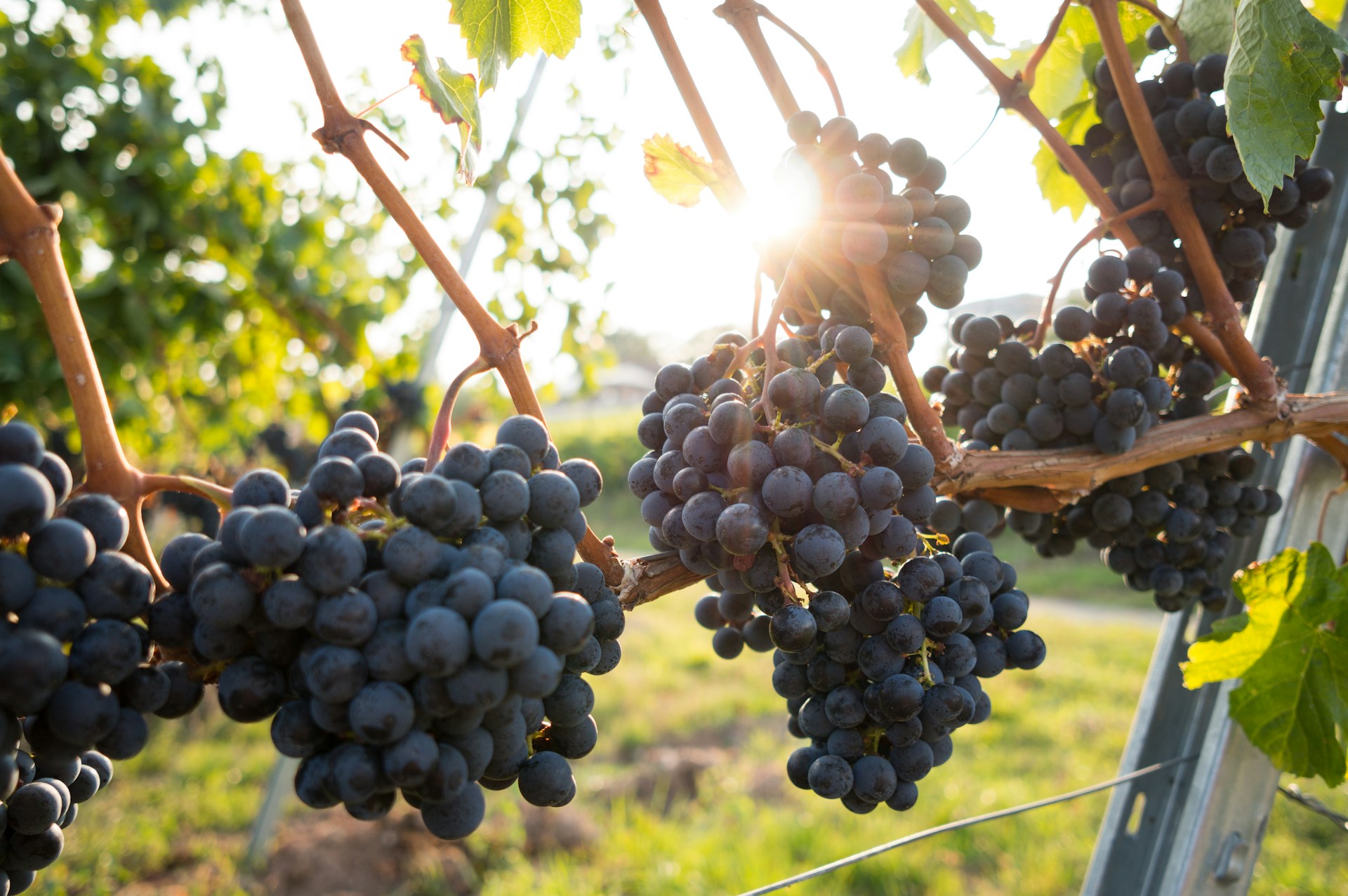
Every old vineyard holds a story that deserves to be told. If you know of one at risk of disappearing, or if you work a century-old plot in need of support, we’d love to hear from you.
Email us at angeldevinas@gonzalezbyass.es
